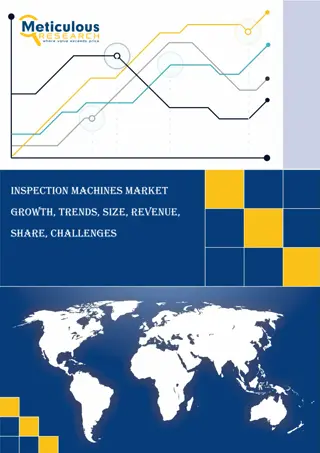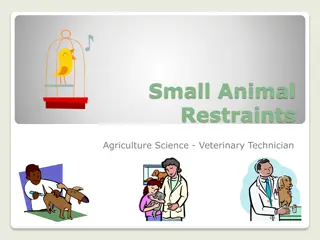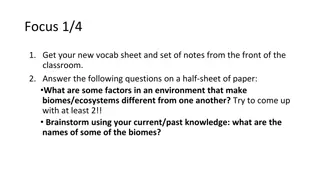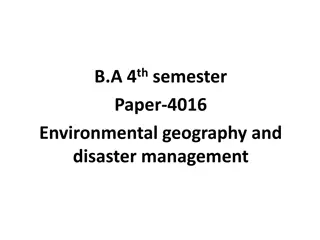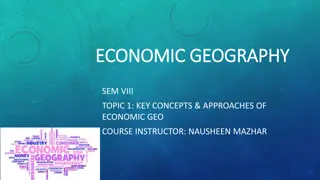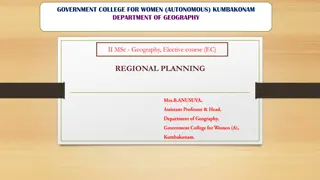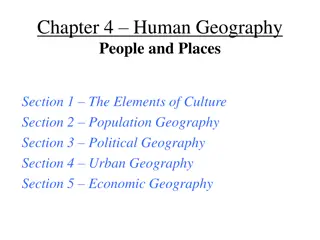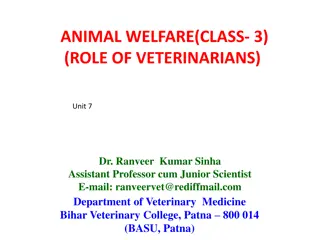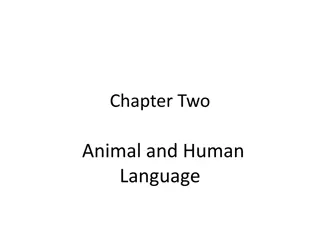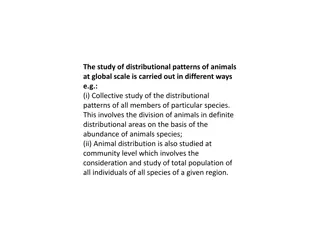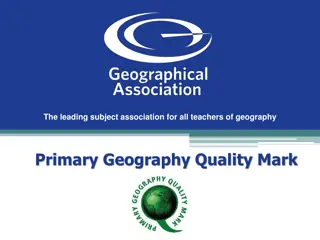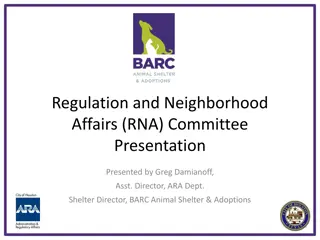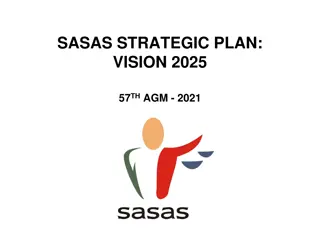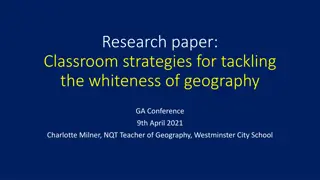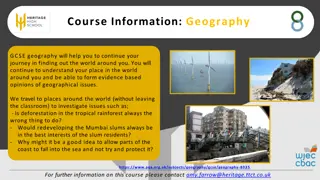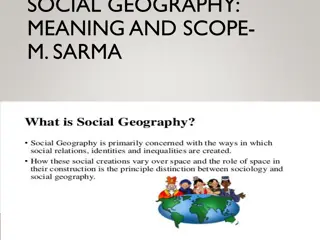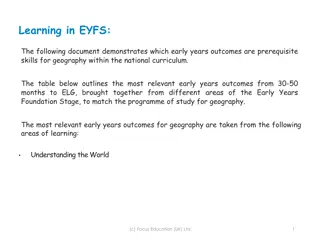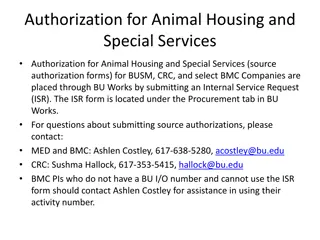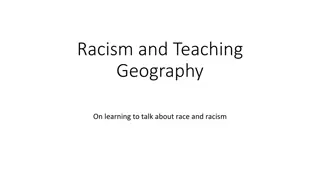Introduction to Geography
Explore the intricate relationship between language, culture, and geography in Chapter 7 of "Introduction to Geography: People, Places, and Environment." Delve into the significance of languages, dialects, and religions as defining factors of human cultures, along with the role of language developme
2 views • 63 slides
Durham University Geography Department Overview
Durham University's Geography Department, led by Professor Cheryl McEwan, offers world-leading research and teaching. With a strong support network for students, including first-generation scholars, the department provides a range of undergraduate courses in both Human and Physical Geography. Studen
0 views • 5 slides
History and Educational Programs of DEU Lab Animal Science Department
Established in 2004, the Department of Laboratory Animal Science at Dokuz Eylul University Institute of Health Sciences offers cutting-edge education focusing on animal welfare and ethical practices in scientific research. The department upholds the 3R Principle—Reduction, Refinement, Replacement�
0 views • 9 slides
Responsibilities of Facility Animal Care Committee at McGill University
The Facility Animal Care Committee (FACC) at McGill University oversees animal activities, ensures ethical treatment of animals, and adheres to guidelines from organizations such as the Canadian Council on Animal Care (CCAC). Responsibilities include continual oversight of animals, approving care pr
1 views • 13 slides
Articulating the usefulness of geography in the real world.
Explore the evolving landscape of geography education through insightful data on student enrollment trends, subject choice theories, and barriers faced in teaching geography. Delve into how educators can leverage subject choice theory to enhance the options process and address student interest in bo
3 views • 29 slides
Feed Software Market is expected to reach $456.1 million by 2030
The growth of this market is attributed to the adoption of digital technologies and automation in the animal feed industry, the growing animal population, increasing demand for healthy animal-based food products, increasing animal health expenditure and pet insurance, and the growing need to reduce
0 views • 4 slides
Animal Welfare and Ethics: Standards and Regulations in India
The content covers a wide range of topics related to animal welfare, ethics, and laws in India. It delves into the definition of animal welfare, the role of veterinarians, animal welfare organizations, regulations like the Prevention of Cruelty to Animals Act, and protection of wildlife, working ani
0 views • 15 slides
Principles of Animal Breeding: Introduction and Historical Perspective
This unit covers the introduction to animal breeding, the application of genetics principles in breeding, historical perspectives including the work of Robert Bakewell, and key events in animal breeding evolution. Topics include breeding systems, importance of animal breeding, and notable figures in
1 views • 12 slides
Importance of Training in Animal Care and Use for Research
Training in animal care and use is essential to ensure humane and appropriate treatment of research animals, promote regulatory compliance, and uphold high standards of science and animal well-being. The presentation covers the necessity of training, goals including reviewing animal use and identify
0 views • 53 slides
Small Animal Restraints and Safe Handling Practices in Veterinary Technology
Importance of safe practice when working with small animals includes preventing harm, reducing injury, and minimizing stress. Proper animal handling methods and tools are crucial for the safety of both animals and handlers. Common methods of handling different species, demonstrating appropriate anim
1 views • 22 slides
Understanding Biomes: Climate, Vegetation, and Adaptations
Biomes are vast regions defined by climate, plant and animal communities. Factors like climate, geography, and vegetation impact the unique characteristics of each biome. Understanding biomes involves knowledge of climate, geography, vegetation adaptations, and animal diversity. Changes in one part
0 views • 23 slides
Understanding the Difference: Animal Rights vs. Animal Welfare
Explore the nuanced distinction between animal rights and animal welfare, delving into the ethical considerations, philosophies, and advocacy efforts surrounding these concepts. Discover how animal rights proponents emphasize the equal rights of animals, while animal welfare focuses on humane treatm
0 views • 36 slides
Exploring Geography at Ramsey Grammar School: Course Insights, Student Feedback, and Achievements
Discover the engaging Geography course at Ramsey Grammar School Year 9, where students find the subject enjoyable, relatable, and enriching. The department's success in nurturing skills and understanding is evident from the high achievement rates. Geography offers a diverse curriculum linking to var
1 views • 19 slides
Understanding Environmental Geography and Disaster Management in B.A. 4th Semester - Paper 4016
Environmental geography encompasses the systematic study of the interactions between living organisms and their natural surroundings, focusing on spatial attributes and human-nature relationships. This branch of geography emphasizes the application of geographical information to address environmenta
0 views • 6 slides
Understanding Key Concepts in Economic Geography
Economic Geography is a sub-discipline that utilizes a geographical approach to analyze the spatial distribution of economic activities at various scales. It focuses on the location of economic activities and their relationship with the environment, encompassing primary, secondary, and tertiary sect
1 views • 20 slides
Understanding Geography: Earth's Description and Study
Geography, coined by Greek scholar Eratosthenes, encompasses the description and explanation of Earth's surface differentiation. It involves physical and human aspects, with branches like geomorphology, climatology, and economic geography. Physical geography studies the lithosphere, atmosphere, hydr
0 views • 6 slides
Understanding Geographical Space in Geography Studies
Geographical space in geography encompasses natural and social elements, defining locations, and interactions essential for comprehending the world. Space and place influence various aspects such as economics, health, and climate. Geographers explore spatial distribution, processes, and human-enviro
0 views • 20 slides
Understanding Biogeography: Patterns, Processes, and Scope
Biogeography explores the distribution of living organisms, past and present, analyzing ecological and evolutionary processes that shape these patterns. It encompasses plant and animal life, human impacts, and the spatial relationships within ecosystems. The field is divided into plant biogeography
1 views • 10 slides
Exploring Human Geography: Culture, Population, and Places
Delve into the diverse elements of human geography, from the intricacies of culture including food, religion, and language to the dynamics of population geography like natural increase rates and population density. Gain insights into political, urban, and economic geography as you discover where the
0 views • 39 slides
Role of Veterinarians in Animal Welfare
Veterinarians, especially with the increasing number of female professionals in the field, play a crucial role in promoting animal welfare through daily practices, advocacy, education, and research. They are involved in various sectors like biomedical, wildlife, and farm animal research, as well as
3 views • 10 slides
Exploring Animal Management and Sociology in Education
Discover the intersection of animal management and sociology in education through a comprehensive course structure that covers topics ranging from animal welfare and ethics to practical husbandry. Dive into the significance of animal care in the UK economy and learn about various career paths in thi
2 views • 19 slides
Laboratory Animal Facilities Record-keeping Guidelines
Guidelines for maintaining records in laboratory animal facilities include provisions for animal housing, staff records, health monitoring, and standard operating procedures. Compliance with CPCSEA regulations ensures ethical review procedures for animal research proposals. Focus is on providing a s
6 views • 11 slides
Understanding Allergies to Animals and Living Organisms
Allergies to animals and living organisms are a result of specific immune processes triggered by allergenic substances like proteins and peptides. This allergic response can be caused by various animal proteins such as dog allergens Can f.1, Can f.2, and Can f.3, and cat allergen Fel d1. The represe
1 views • 10 slides
Uniqueness of Human Language and Communication Contrasted with Animal Communication
Human language possesses unique properties such as reflexivity, displacement, and arbitrariness, setting it apart from animal communication. These distinctions enable humans to communicate abstract concepts, discuss past and future events, and use arbitrary linguistic forms. The contrast between hum
1 views • 17 slides
Understanding Global Animal Distribution Patterns
The study of animal distribution patterns at a global scale involves analyzing species abundance and diversity in specific areas. Factors like environmental conditions, latitudes, and evolutionary history influence animal distributions. There are horizontal and vertical zones of animal distribution,
1 views • 25 slides
Exploring Human-Animal Interactions through 25 Years of Quality Research
Delve into the interdisciplinary realm of human-animal interactions with a focus on social sciences and quantitative research. Discover key themes such as social psychology, therapy, animal welfare, and more. Explore attitudes and personality differences related to animal treatment, empathy, and bel
1 views • 26 slides
Enhancing Geography Education with the Primary Geography Quality Mark
The Primary Geography Quality Mark (PGQM) plays a crucial role in enhancing standards in geographical learning for schools. By providing a powerful process of self-evaluation and reflection, the PGQM aims to engage, stimulate, and support teachers in improving curriculum planning, CPD, and overall d
0 views • 15 slides
BARC Animal Enforcement Programs and Protocols
BARC Animal Enforcement is responsible for addressing dangerous, aggressive, and nuisance dog cases in the community. Through a structured priority matrix and enforcement tools, BARC aims to ensure public safety and animal welfare. The process involves investigation, designation determination, and c
0 views • 15 slides
SASAS Strategic Plan Vision 2025 - Summary and Objectives
The SASAS Strategic Plan Vision 2025 aims to develop capacity in animal science to enhance animal production systems sustainably, promote welfare, job creation, and poverty alleviation. Informed by local, regional, and global imperatives, it aligns with the National Development Plan 2030, African Un
0 views • 11 slides
Discover the Fascinating World of Geography - GCSE Overview
Explore the diverse field of Geography through this GCSE overview. Delve into Physical Geography encompassing natural elements like climate and landforms, and Human Geography focusing on human interactions with the planet. Uncover the unique blend of transferable skills such as communication, teamwo
0 views • 30 slides
Addressing Whiteness in Geography Education: Classroom Strategies
This research paper explores the persistence of whiteness in the field of geography education, addressing systemic racism and lack of diversity in knowledge production. The study highlights classroom strategies for tackling issues such as country representation and alienation of students based on he
0 views • 18 slides
Understanding Physical Geography: Branches and Concepts Explored
Physical geography is a field that studies natural processes on Earth's surface, providing the backdrop for human activities. It encompasses various branches like geomorphology, climatology, oceanography, biogeography, soil geography, and environmental geography. Geomorphology investigates landforms
0 views • 10 slides
Upgrading to TOPAZ Elements: Enhancing Animal Protocols, Orders, Census, and Billing
The Animal Resource Facility (ARF) and Office of Animal Care Compliance (OACC) are shifting to TOPAZ Elements, a comprehensive web-based system, to streamline management of animal protocols, orders, census, and billing. This upgrade aims to provide better oversight for PIs, enhance compliance with r
0 views • 8 slides
Explore Geography: GCSE Course Overview, Assessment & Beyond
Dive into the GCSE Geography course to gain a deeper understanding of the world around you. Explore topics such as deforestation, urban development, and coastal erosion. The course assesses your knowledge through papers on natural hazards, societal issues, and geographical exploration. Discover care
0 views • 4 slides
Understanding Social Geography: Meaning, Scope, and Differences
Social geography is a branch of human geography focusing on social structures, groups, and activities. It examines the spatial arrangement of social phenomena, social differences, and patterns in understanding socially defined population groups. The scope of social geography includes analyzing spati
0 views • 25 slides
Understanding Laboratory Animal Genetics and Research Importance
This course (AGB 610) delves into the realm of laboratory animal breeding, exploring the significance of using animals in research and teaching. Dr Shanker Dayal, a distinguished professor, guides students through lectures on animal genetics and the common uses of laboratory animals. The course emph
0 views • 14 slides
Early Years Outcomes Prerequisite Skills for Geography in National Curriculum
The document outlines early years outcomes crucial for geography in the national curriculum, spanning from 30-50 months to ELG. It highlights skills like observing, questioning, understanding growth, showing care, recognizing similarities and differences, and more in young learners, preparing them f
0 views • 10 slides
Understanding Animal Tissue Culture and Cell Line Production
Animal tissue culture involves growing tissues separate from the animal in a laboratory setting. To achieve exponential cell growth, cells are converted into immortal cell lines. The production of a cell line involves steps like breaking cell adhesion, incubation, and transferring cells to fresh med
0 views • 22 slides
Authorization for Animal Housing and Special Services Process Guidelines
The guidelines outline the process for authorizing animal housing and special services at BUSM, CRC, and select BMC Companies through BU Works via Internal Service Requests (ISR). Investigators must submit ISR forms for animal housing at the Animal Science Center, monitor charges, and provide advanc
0 views • 8 slides
Exploring the Intersection of Racism and Geography Education
The content delves into the presence of structural racism in society, particularly within the education system and geography curriculum. It emphasizes the importance of addressing racism within educational institutions, urging for action rather than mere declarations of inclusivity. The discussion h
0 views • 7 slides





